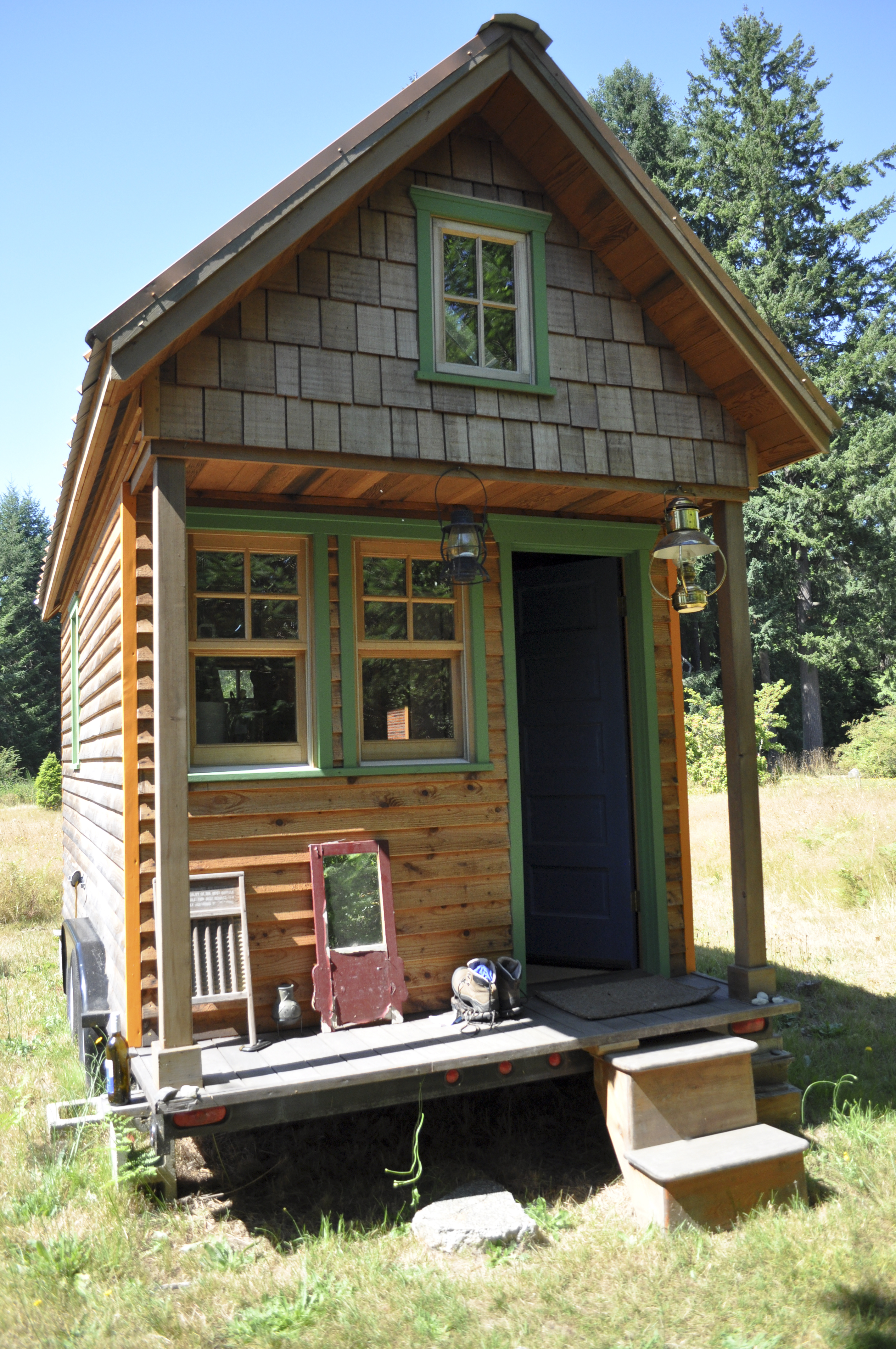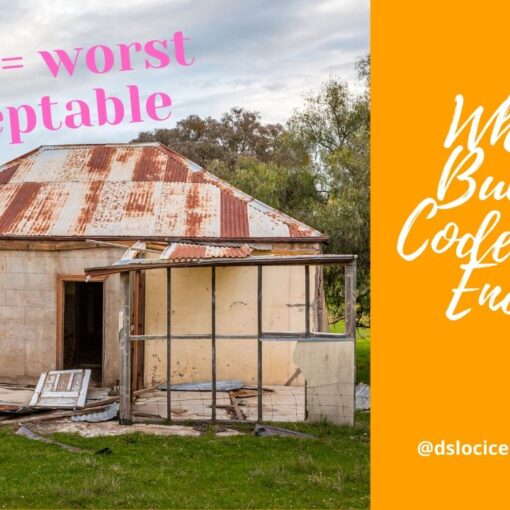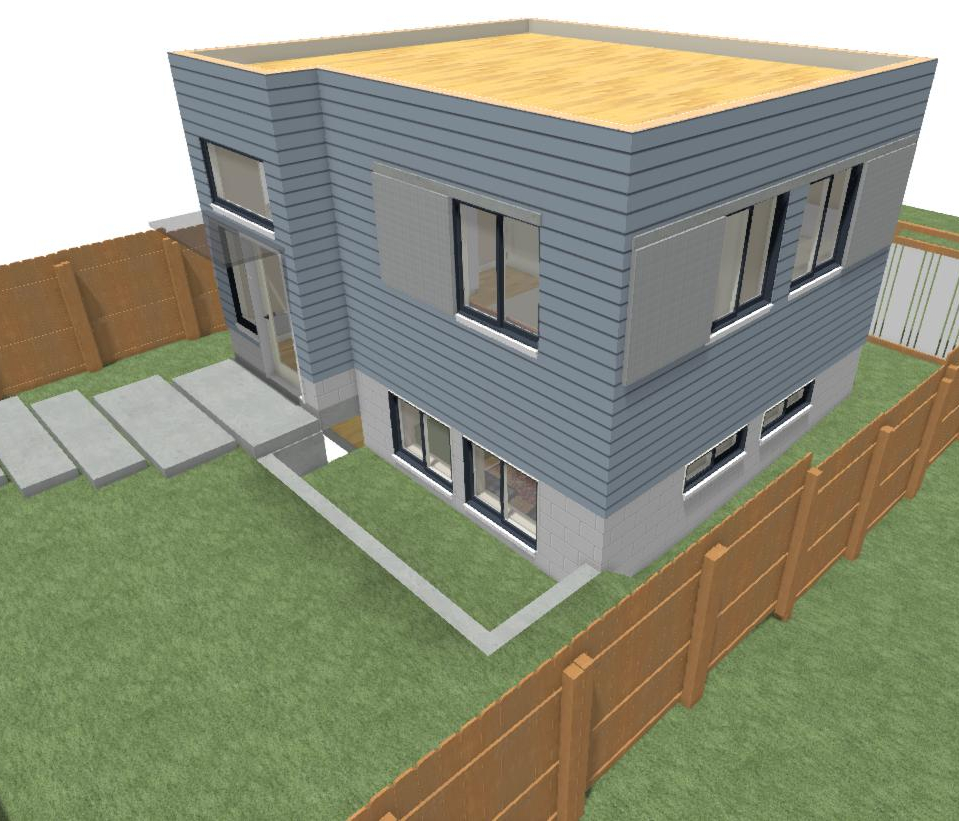One of the things I am interested in, and have some experience with, is designing for living in small spaces. The average American house is 2300 square feet, which is about 1000 square feet larger than the average American house of 50 years ago.
Are American families bigger than they were 50 years ago? No. American families are smaller than they were 50 years ago. Most of us really don’t need all the space we inhabit.
There is currently a tiny house living “movement”. It is a backlash against the mega mansions of the ’90’s and ’00’s. Tiny houses are dwellings of roughly 230 square feet built on trailer chassis. These homes have to be built on trailer chassis because the building code does not allow for such small houses Making houses this small efficient enough for modern living means not complying with aspects of the code.
For more information about tiny living, check out the FYI network’s TV program Tiny House Nation. You can also visit Tumbleweed Tiny Houses, the website for Jay Shafer’s tiny house business. Jay Shafer is one of the leading figures in the tiny house movement. Kirsten Dirksen’s YouTube channel is an interesting place to spend some time looking at all the variations of tiny living. Or just Google “Tiny Living”, “Tiny Houses” or any variation like that and explore.
Not all of the tiny houses are trailers. I recommend looking up Sarah Susanka’s “Not So Big House” books. Graham Hill, founder of treehugger.com, renovated a New York apartment into a remarkable flexible little home. Watch this video about it.
There is a hierarchy of smallness. There are “micro houses”, “tiny houses”, and “small houses”.
- Micro houses are less than 100 square feet.
- Tiny houses are between 101 square feet and 300 square feet.
- Small houses are between 301 square feet and 1000 square feet.
There is some debate in the movement about the definition of “small”. Some say “small” should be 301 to 500 square feet. Other say it should extend to 1500 square feet. (A kind of “inflation” which is uniquely American where even small is big.)
Living in small spaces is, of course, not a new thing. People have been living in small spaces for millennia. What is new about living small is that it is “hip” and environmentally conscious. This is not to say I am opposed to living small. I actually agree with the kind of thinking that leads people to live smaller, transferring their lives from average sized dwellings to smaller dwellings, divesting themselves of “stuff” that they don’t really need or is holding them back. I am glad that this current movement’s “hipness” is bringing attention to these ideas.
Where I fault the movement is that it is focuses on the opposing extreme. Yes – McMansions were ridiculously big, examples of conspicuous consumption of near profanity. But trying to jam people’s lives into tiny homes is an example of “all or nothing” thinking. If 5,000 square feet is objectively too big for a family of 4, similarly, 300 square feet is equally objectively too small for a family of 4. Surely, there is a more comfortable middle ground. And that middle is probably around 1000 square feet.
There are people who will thrive divesting themselves of 95% of their stuff. These same people will enjoy the challenge of living in a tiny house. They will enjoy the opportunity to live a debt free life in a home that they can move from place to place, or set down on some rural property in order to live off the grid.
I think there are more people who will thrive divesting themselves of 30% of their stuff. This larger group of people will enjoy the freedom that comes with living the smaller life in their current homes. I think there are more people who will thrive divesting themselves of 50% of their stuff. This larger group of people will enjoy downsizing their homes to 500 – 1000 square foot apartments, condos or homes. The idea behind the tiny house movement, that we can live better with less, is valuable. Lets expand the definition of the movement to include a greater spectrum of options for living small.
Whether you are a part of the tiny minority (pun intended) who are ready to move into a tiny house, or a member of the larger groups of people who want to live small in their current home or in a downsized home, I am ready to help you with the design challenges that come with moving our complicated lives into smaller spaces.
The photograph is of a tiny house in Washington state. The photo is copyright 2010 by Tammy under Creative Commons.





